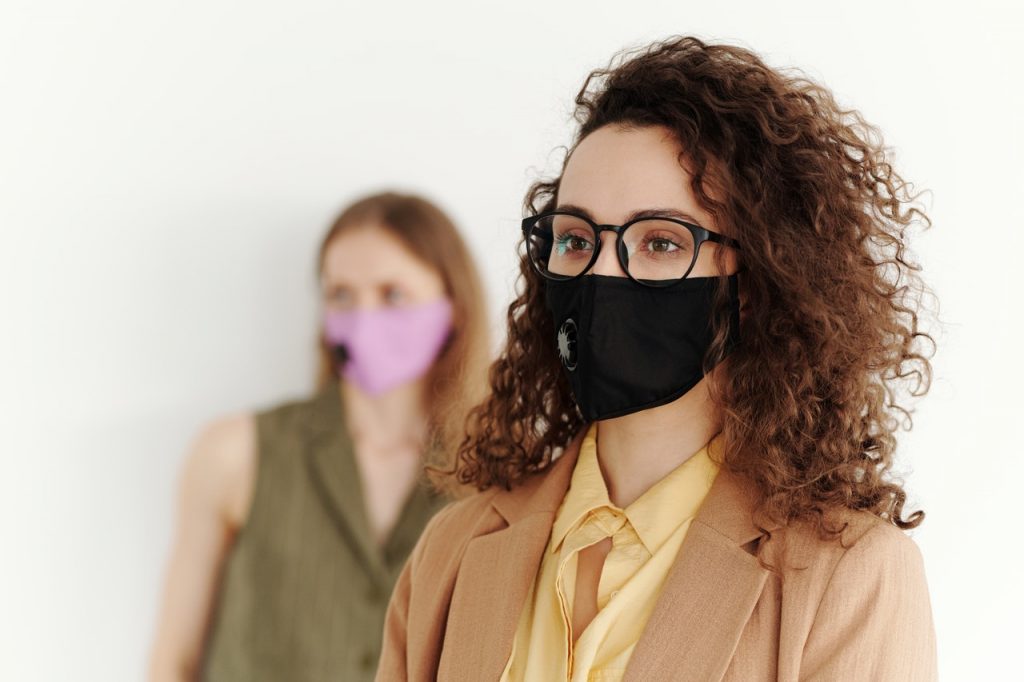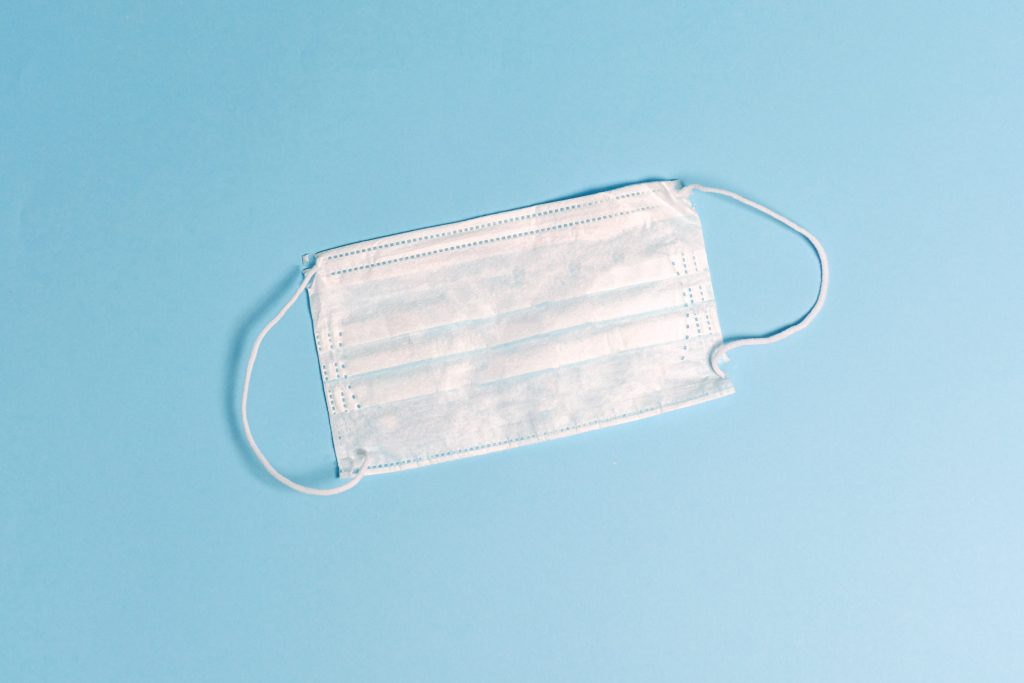Wearing a face mask is an important part of preventing the spread of COVID-19, but masks can come with some not-so-great side effects like maskne, foggy glasses, and general irritation around your face.
Have you been struggling with your spectacles while wearing a face mask? Do your glasses mist up, or do your eyes feel dry? You’re not alone.
FOGGY GLASSES

Individuals who wear face masks have issues with glasses misting or fogging up.
Glasses get misty or foggy when warm air flows out of the top of the mask when we breathe out. The warm air flows over the cooler spectacle lenses causing condensation to form on the lens surface, resulting in misty vision. The moist air may also cause the glasses to slip around your nose making them less comfortable.
Here are some steps you can take to avoid it;
1. Ensure your spectacles are well-fitted. Glasses that slip down your nose or sit too far from your eyes are more likely to mist up.
2. Wear well-fitted mask that is the right shape and size for your face, because a good fitting face covering will be snug, and air should be directed out the sides of the mask, not out of the top.
3. Use anti-fogging spray or wipes, your local optometrist can help you with it.
4. You could try taping the top of the face mask on your nose, to stop the air flowing out of the top of the mask, towards your glasses.
5. Tighten the face mask by crossing the ear loops.
6. Keep the lenses clean and use a cleaning spray and microfibre cloth as recommended by your Optometrist.
7. If you need to update your glasses, consider lenses with easy clean hydrophobic coating
8. Try using contact lenses if you experience persistent fogging. They’re safe and there is no evidence that contact lens use increases your risk to COVID-19
Healthy hand washing hygiene, hand drying, and contact lens hygiene will ensure your eyes stay comfortable and healthy. Don’t touch your mouth, face or contact lenses with unwashed hands.
Mask Associated Dry Eye (MADE)

Wearing mask is essential to helping reduce the spread of COVID-19, but may lead to dryness and irritation of the eye and this has been termed Face Mask Ocular Irritation or Mask Associated Dry Eye (MADE).
Dry eye occurs when the eyes does not produce tears properly or when the tears evaporate easily, and this is the case in Mask Associated Dry Eye (MADE).
It usually presents symptoms such as itching, burning sensation, tired eyes, sore eyes, watery eyes, light sensitivity, foreign body sensation. etc.
If you have been affected by this due to the frequent use of Face Mask, youre not alone.
Here are some steps you can take to avoid it;
1. Ensure your face mask sits firmly around the top and around your nose, this ensures that when you breathe out air is channeled out of the side of the mask and not out of the top over the front of your eyes.
However, you can tape the top of your mask with a wide surgical tape to ensure the air flow is out of the side, and not upwards towards your eye surface.
2. The use of ocular wetting drops, spray, ointment which are widely available from your local Optometrist or local pharmacy, can help relieve the dry eyes.
3. Intentional blinking of the eyes every 20 minutes to naturally refresh your tears and you can do this simply by blinking frequently 3-4 times and then close your eyes firmly for a few seconds.
4. If you’ve been experiencing any symptoms of dry eye like itching, burning sensation, blurry eye, tired eyes, watery eyes, sore eyes.etc. do not hesitate to visit your Optometrist for adequate care.
REFRENCES
• Daniel Hardiman-McCartney FCOptom (2020) Mask management: Dry eyes and misty glasses retrieved from: https://www.college-optometrists.org/the-college/media-hub/news-listing/mask-management-dry-eyes-and-misty-glasses.html
• Korin Miller OD (2020) Mask-Associated Dry Eye Is a Thing—Here’s Why it Happens, and What You Can Do to Stop It retrieved from: https://www.msn.com/en-us/health/medical/mask-associated-dry-eye-is-a-thing-here-s-why-it-happens-and-what-you-can-do-to-stop-it/ar-BB18GoO8?li=BBnba9O
• Kierstan Bord OD (2020) Dry Eye Diagnosis and Treatment retrieved from: https://www.aao.org/eye-health/diseases/dry-eye-treatment


